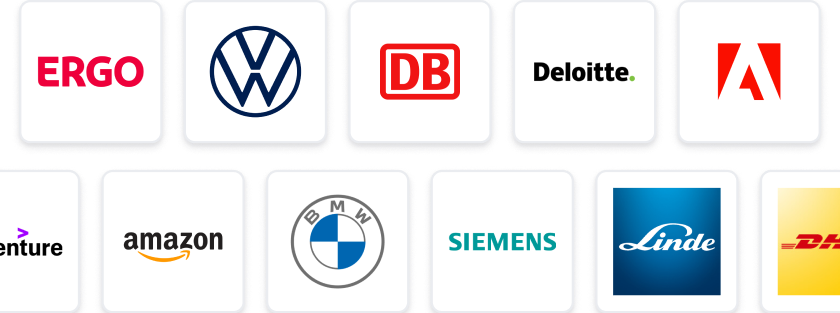At a Glance
- Tasks: Lead the development of innovative optical products from concept to market.
- Company: Join a forward-thinking company at the forefront of optical engineering.
- Benefits: Enjoy competitive salary, flexible working options, and opportunities for professional growth.
- Why this job: Shape the future of optical technology while collaborating with talented engineers.
- Qualifications: Expertise in Optical Engineering and experience with simulation tools required.
- Other info: This role is based in Tamworth, UK, and requires an EU work permit.
The predicted salary is between 72000 - 108000 £ per year.
Social network you want to login/join with:
Chief Technology Officer- Optical Engineering, Tamworth
Client: Page Executive
Location:
Tamworth, United Kingdom
Job Category:
Other
EU work permit required:
Yes
Job Reference:
6e835a1b0291
Job Views:
2
Posted:
14.07.2025
Expiry Date:
28.08.2025
Job Description:
Job Description
We are seeking a highly skilled and visionary CTO with deep expertise in Optical Engineering to drive the development of our IOL and ICL product lines. This role involves overseeing optical design, collaborating with material and mechanical engineers, and leading the product development from concept to commercialization. The CTO will shape the company\’s technological roadmap and ensure seamless integration across disciplines.
Technical guidance in Optical Engineering:
- Drive the design and optimization of advanced diffractive and refractive optical systems for IOL and ICL applications.
- Design and develop simulation workflows using tools such as Zemax, Code V, or equivalent software.
- Address optical technical issues, including chromatic aberrations, light efficiency, and image quality, with innovative solutions.
Cross-Disciplinary Product Development:
- Collaborate with material engineers to evaluate and integrate biocompatible materials for optical applications.
- Work closely with mechanical engineers to ensure precise alignment of optical and mechanical components.
- Oversee prototyping and testing processes to refine designs and ensure manufacturability.
- Incorporate emerging trends in optical engineering and material science into product development.
- Drive innovation in ICL technology, ensuring compatibility with IOL applications and future product needs.
Manufacturing & Scalability:
- Develop manufacturing workflows for optical and mechanical components, including tooling and quality assurance.
- Manage the scale-up from prototype to mass production, maintaining quality and efficiency.
- Coordinate with vendors and internal teams to meet production timelines and standards.
#J-18808-Ljbffr
Chief Technology Officer- Optical Engineering employer: Page Executive
Contact Detail:
Page Executive Recruiting Team
StudySmarter Expert Advice 🤫
We think this is how you could land Chief Technology Officer- Optical Engineering
✨Tip Number 1
Network with professionals in the optical engineering field. Attend industry conferences, webinars, and local meetups to connect with potential colleagues and mentors who can provide insights into the role and company culture.
✨Tip Number 2
Stay updated on the latest trends and technologies in optical engineering. Familiarise yourself with advancements in IOL and ICL technologies, as well as software tools like Zemax and Code V, to demonstrate your expertise during discussions.
✨Tip Number 3
Prepare to discuss your previous experiences in cross-disciplinary collaboration. Highlight specific projects where you successfully worked with material and mechanical engineers to showcase your ability to lead diverse teams.
✨Tip Number 4
Research the company’s current product lines and technological roadmap. Understanding their existing IOL and ICL products will allow you to propose innovative ideas that align with their vision during interviews.
We think you need these skills to ace Chief Technology Officer- Optical Engineering
Some tips for your application 🫡
Understand the Role: Before applying, make sure you fully understand the responsibilities and requirements of the Chief Technology Officer position in Optical Engineering. Familiarise yourself with the specific technologies and methodologies mentioned in the job description.
Tailor Your CV: Craft your CV to highlight relevant experience in optical engineering, product development, and leadership roles. Emphasise your expertise with tools like Zemax or Code V, and any successful projects that demonstrate your ability to drive innovation in optical systems.
Write a Compelling Cover Letter: Your cover letter should reflect your passion for optical engineering and your vision for the role. Discuss how your background aligns with the company's goals and how you can contribute to their technological roadmap and product development.
Showcase Cross-Disciplinary Collaboration: In your application, provide examples of how you've successfully collaborated with engineers from different disciplines. Highlight any experiences where you integrated optical design with mechanical and material engineering to achieve project goals.
How to prepare for a job interview at Page Executive
✨Showcase Your Technical Expertise
As a CTO in Optical Engineering, it's crucial to demonstrate your deep understanding of optical design and simulation tools like Zemax or Code V. Be prepared to discuss specific projects where you've tackled challenges such as chromatic aberrations or light efficiency.
✨Highlight Cross-Disciplinary Collaboration
This role requires working closely with material and mechanical engineers. Share examples of how you've successfully collaborated across disciplines in previous roles, focusing on how you ensured precise alignment and integration of components.
✨Discuss Innovation and Trends
Stay updated on emerging trends in optical engineering and material science. During the interview, mention how you've incorporated these trends into product development, particularly in ICL technology and its compatibility with IOL applications.
✨Emphasise Manufacturing and Scalability Experience
Talk about your experience in developing manufacturing workflows and managing the scale-up from prototype to mass production. Highlight any specific methodologies you've used to maintain quality and efficiency during this process.
